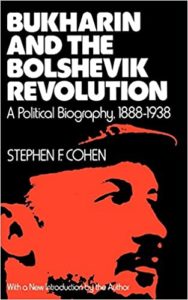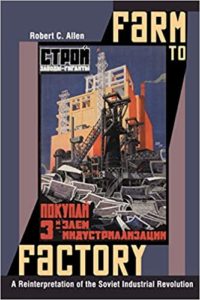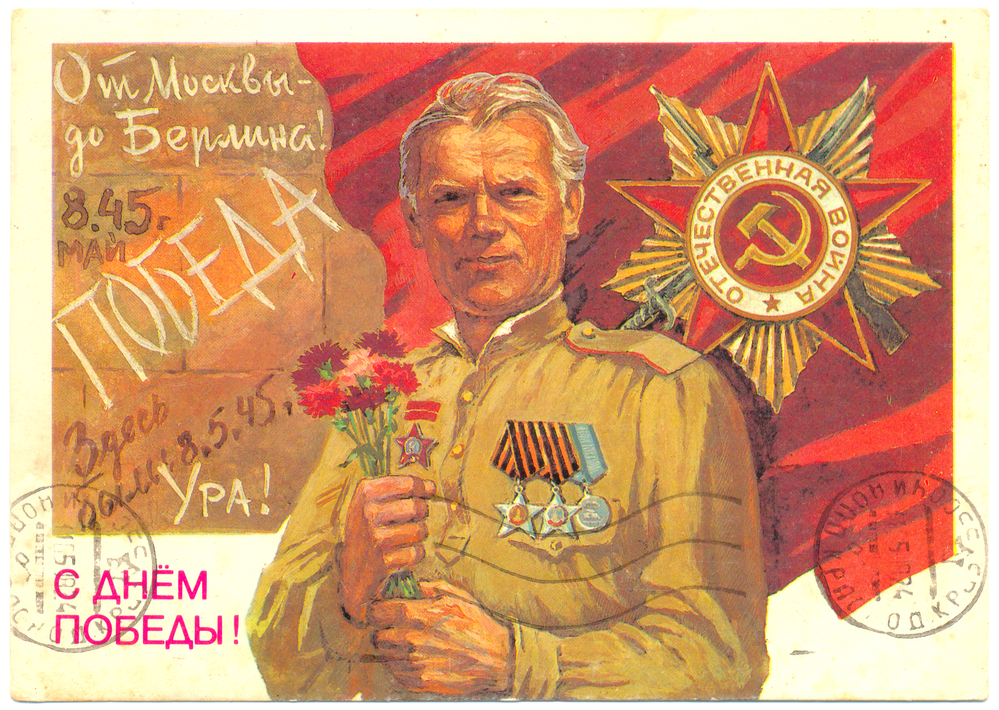In my previous posts, I offered recommendations for reading on the Russian Revolution and the Soviet economy, and the Ethnography of Soviet life.
As you can glean from my recommendations for reading so far, I have stressed learning about the dysfunctions and dystopian aspects of the system. I will come back to that in my final post in this series. But right now I do think it is valuable to also acknowledge alternative perspectives.
During the 1970s, a “revisionist school” of historians rose to challenge the standard “Cold War” totalitarian system narrative. They provided counter evidence to say either that they system was more decentralized and democratic than the totalitarian model suggested, or that it was less repressive than the totalitarian model claimed; or that the economic system was more successful than the critics acknowledged. Some of these claims made in the 1970s were subsequently challenged when the archives opened in the 1990s, revealing the full extent of Soviet repression. Other claims are still part of the ongoing contested conversation in Soviet studies. I personally believe that many of the revisionist accounts have important insights, but that in general they tend to miss critical aspects of even the stories they are telling. I also think, and of course I would, that there are serious errors of a methodological and analytical nature committed in many of these revisionist accounts due to ideological precommitments. Still, to become an informed student, one must be knowledgeable of these alternative accounts.
The first one to read would be Jerry Hough’s The Soviet Prefects (originally published in 1969) explores the role that local party organs play in industrial decision making. It is a challenge to the idea of a unified and comprehensive central plan. Hough’s work was an initial challenge to the idea that Stalin’s regime represented an institutionally strong and robust centralized administration, and starts to push toward the revisionist account that the Stalinist system was actually institutionally weak, and thus the totalitarian account of the control and repression of the system must be exaggerated.
Hough was not as strong in that revisionist account as was Arch Getty, who in Origins of the Great Purges (originally published in 1985) argued that the archival evidence from the 1930s demonstrates that the Communist Party under Stalin was chaotic and confused rather than ruthlessly efficienct in its execution of terror. The totalitarian account must be exaggerated, Getty concluded. Stalin didn’t orchestrate the terror, but was responding to political threats as they arose in the struggle for survival.

Stephen Cohen’s wonderful book Bukharin and the Bolshevik Revolution (originally published in 1973) tells the story of the Russian Revolution and the Soviet experience through the eyes of one of its main architects, who was later a tragic casualty of the betrayal of the revolutionary ideas. I am extremely partial to this because Bukharin wrote seriously about the economics of communism. Bukharin, in fact, actually spent time in Vienna attending Bohm-Bawerk’s famous seminar, and he wrote a book criticizing the Austrian School of Economics. He was familiar with the works of Ludwig von Mises, and in fact would invoke Mises during debates within the Soviet Union on the shift toward the New Economic Policy. He was dubbed “the most learned critic of communism”. Bukharin wrote the economic policies for the initial communist period which I mentioned earlier in reference to the work of Malle, and he wrote the New Economic Policy after the collapse of the Russian economy forced the Bolsheviks to chart of new course to stay in power. He was named by Lenin, along with Trotsky and Stalin, as the potential successor to his leadership in 1923, ironically sealing his fate. Stalin first aligned with Bukharin to purge Trotsky for exhibiting “left-wing childishness”, and then flipped sides to purge Bukharin for “right wing opportunism”. Cohen’s book asks the question, what if Bukharin had won out in that political struggle rather than Stalin? Many communists had been asking a similar question about Trotsky ever since Stalin had him murdered in Mexico, but Cohen successfully got a new generation to ask that similar question. As perestroika matured as public policy under Gorbachev, Bukharin would be “liberated” and even became a symbol of market reforms such as the “Cooperatives Act of 1987”, and photos of Bukharin could be seen around Moscow.

Back to the nitty gritty of Soviet history, one of the most horrific tales of the Soviet experience is the Holodomor, as depicted in Robert Conquest’s The Harvest of Sorrow (1986) or more recently in Anne Applebaum’s Red Famine (2017). But the revisionist account by R. W. Davies and Stephen Wheatcroft in their book The Years of Hunger (originally published in 2004) argues that the famine was not intentional, but resulted from mismanagement and environmental circumstances. Similar to what I mentioned in my previous post about the “debate” between Malia and Pipes, it appears difficult at times for academics to see their way to explanations that blend ideas and interests with historical circumstances to tell a more nuanced story, as their penchant is for either/or narratives. That said, detailed scholarship and careful reworking of numerical information is always valuable in helping gain an understanding.

This also leads to my last revisionist work, and I think the one that most challenges my own priors about Soviet economic performance through time, Robert Allen’s Farm to Factory (originally published in 2003). He argues against the now conventional wisdom that the Soviet experiment was a horrific failure, and that if you measure correctly it must be counted as one of the greatest economic development stories of the 20th century. One cannot be conversant in the contemporary conversation about the legacy of the Soviet Union without careful study of Allen’s bold reinterpretation.
Peter J. Boettke is University Professor of Economics & Philosophy, George Mason University, Fairfax, VA 22030.


READER COMMENTS
nomadscientist
Jun 5 2020 at 11:24pm
It seems a little incomplete to talk about a “revisionist school” starting in the 1970s. Lots of people in the US had been sympathetic to the USSR since 1917, including (especially?) intellectuals. The US was never some uniformly anti-Soviet cold warrior state; it was never as down on the Soviet Union’s overall prospects, viability, and goodness when the Soviet Union actually existed as it became from 1995 onwards.
Mark Z
Jun 6 2020 at 3:56am
I’ve always found the Soviet Union’s rapid expansion of heavy industry to be rather over-celebrated. It was accomplished in large part by diverting labor from the agricultural sector even while that sector was experiencing declining productivity, and an enormous fraction of that heavy industry was geared toward military production. The fixation with traditional heavy industry also likely contributed to the USSR’s difficulty modernizing later on. It seems like something of an economic Pyrrhic victory.
In any case, the theme of Stalin’s regime being less centralized and organized than the totalitarian regime it’s portrayed as is a recurring theme in the histories of dictatorships. I’ve seen similar things written about Mao and it seems reminiscent of I think it was Ian Kershaw’s characterization of the Third Reich as a chaotic, unstable competition between rival bureaucracies for influence within Hitler’s regime. Beyond the question of desirability, perhaps we overestimate even the practical possibility of attaining such a degree of centralization of large societies as sought by totalitarian ideologies.
R. K. Kirchoff
Jun 7 2020 at 8:26am
This hits upon a valuable insight that pro-market thinkers make about centralized authority all the time: that it is practically limited by the scope of the ability of one person, or even a cabal of people, to focus on any given problem. This scales very badly as institutions increase in size and complexity.
That said, I think it is a confusion to state that simply because the central state couldn’t control everything from the center, to therefore say it wasn’t centralized or authoritarian. Only that it was a poorly functioning centralized authoritarian state. I think we should make a distinction between the organizational ideal and the pragmatic reality, because the organizational ideal will influence the resulting pragmatic reality to a great degree.
This wasn’t new to Russia with the USSR, either. The same was true of Czarist Russia. For example, everywhere Peter the Great went, there was a flurry of action. If he sent a command from afar, much was accomplished. But when his focus shifted, when his attentions waned, activity generally ground to a halt after a while as the local authorities mostly resolved back to maintaining whatever local priorities they had. The operating assumptions of those authorities was of course to do whatever was required to prevent the collapse of their local power, but nothing that would ever attract untoward attention from on high. One might describe this as pragmatically decentralized, but of course the centralized nature of the system precluded a great deal of activity that could have occurred in a truly decentralized system.
I suspect the same was true in the USSR. A certain degree of pragmatic devolution may have been tolerated, but this should not imply to anyone that those local powers had any sort of real autonomy. Competing centers of power are by definition antithetical to the Communist model.
b4rtr
Jun 6 2020 at 5:08am
Wasn’t R. Allen disproved by this paper?
https://www.nber.org/papers/w19425
Comments are closed.